








Midweek Update 17 August 2023Google Banner Ad THIS WEEK IN MIDWEEK UPDATE SAAF Hercules fleet begins UK upgrades amid funding challenges. Maiden Flight of the Diamond Aircraft eDA40. Textron Aviation secures ANAC certification for Cessna Skycourier, paving the way for sales in Brazil. VoltAero's Cassio 330 had a starring role in its U.S. debut at "the world's greatest aviation celebration" at Oshkosh. Piper M600/SLS HALO System with Garmin Autoland achieves TCCA certification. De Havilland Canada launches the DHC-6 Twin Otter Classic 300-G. Embry-Riddle Aeronautical University selects DA42-VI for fleet renewal. Surcar Airlines to use ZeroAvia hydrogen-electric engines for Canary Islands seaplane flights. Worldwide incidents and accidents This week in History - First flight of the Cessna 208 Caravan Bonus Video - Globe Swift - A Pocket Rocket    19 Springs Breakfast and EAA Chapter 322 monthly fly inn. 19 & 20 SAC North-West Regionals Klerksdorp airfield. Contact Annie Boon at E-mail: info@anniesaviationcorner.com 19 & 20 August SAPFA Speed Rally Groblersdal airfield. For more information contact David le Roux at E-mail: david@pilotinsure.co.za Cell: 073 338 5200  1 Children's Flight at Orient airfield, Magaliesberg. Contact Felix Gosher E-mail: felixgosher@gnmail.com Cell: 086 191 4603 2 Tedderfield Spring Fly Inn. Contact 083 702 3680 2 EAA Chapter 322 monthly gathering Auditorium Rand Airport at 07.30 Contact Neil Bowden E-mail: airadventuresa@gmail.com for more information 3 Rand Airshow Contact Kevin van Zyl Tel: 011 827 8884 for more information 9 Virginia Durban airshow. Contact Brendan Horan E-mail: airshow@creativespacemedia.com Cell: 078 486 6888 9 Helicopter fly-in to Krugersdorp airfield. Contact David le Roux E-mail: David@pilotinsure.co.za 9 & 10 SAC World Advanced Aerobatic Championships training camp venue TBA Contact Annie Boon E-mail: info@anniesaviationcorner.com 16 Vans RV fly-in at Kitty Hawk. Contact Frank van Heerden E-mail: frankvh@mweb.co.za for more information 16 & 17 SAC Limpopo Regionals Phalaborwa airfield. Contact Annie Boon E-mail: info@anniesaviationcorner.com 30 Saldanha West Coast airshow. Contact Clive Coetzee E-mail: clivecoetzee@sun.co.za Cell: 084 614 1675 30 to 7 October Gliding Nationals at Potchefstroom - Carol Clifford bobcar@global.co.za  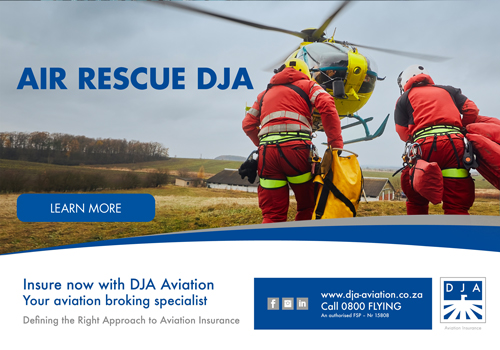  SAAF HERCULES FLEET BEGINS UK UPGRADES AMID FUNDING CHALLENGES SAAF C-130BZ Hercules 409 left Air Force Base Waterkloof on the evening of 8 August for a lengthy flight to the United Kingdom for maintenance and upgrades. Her departure from South Africa was delayed by a day due to overflight clearance issues arising from airspace closures over Niger and neighbouring countries in the wake of the recent coup in Niger.  The SAAF intends to spend this amount on upgrading and maintaining the six remaining C-130s (the SAAF had nine serviceable examples but two have been written off in accidents and one has been cannibalised for spares). The tail numbers of the C-130s that the SAAF wants to be kept flying are 401, 402, 405, 406, 408, and 409 (aircraft 404 suffered a nose gear collapse whilst performing a touch and go in 2010). However, between now and 2029, this will cost just over R4 billion. Major servicing and upgrading of 405 and 409 can be funded, with major servicing to be done in the UK by Marshall Aerospace, which did the C-130BZ upgrade in the 1990s. 405's major service and upgrade is scheduled for mid-2024 - this will take about 18 months. The SAAF aims to have at least one or two C-130s operational at any time while the others undergo maintenance. Due to having only one Hercules servicing bay between the SAAF Air Servicing Unit (ASU) and Denel, servicing more aircraft requires involving an external party. In this case, it will be undertaken by Marshall Aerospace, which will service aircraft 405, 406 and 409. Each upgrade is expected to take approximately eighteen months, with the first commencing in August this year. It is planned for Denel to build a second Hercules servicing bay. Although the exact details of the upgrade are uncertain, it is likely to involve the upgrade or replacement of radios, transponders, and other obsolete avionics. Under Project Ebb, Marshall Aerospace in the late 1990s upgraded the SAAF C-130 fleet to C-130BZ standard (three aircraft were upgraded in the UK and the remaining six in South Africa by Denel). The upgrade covered a major avionics upgrade package that gave the aircraft a modern glass cockpit.  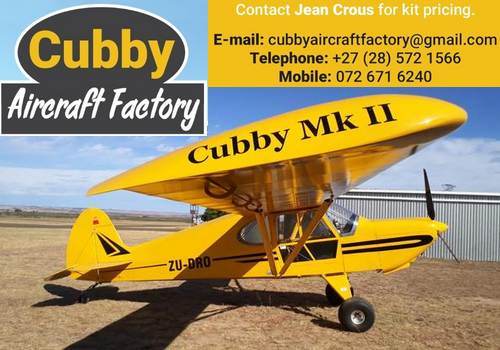 The all-electric eDA40 made its first flight recently at Diamond Aircraft's headquarters in Wiener Neustadt (Austria). This marks a significant milestone for the manufacturer and all project partners and is a big step towards certifying the aircraft. The eDA40, which shall be the first EASA/FAA Part 23 certified electric aircraft, is designed to be an excellent electric circuit trainer powered by an ENGINeUSTM electric smart motor by Safran Electrical & Power and charged by Electric Power Systems' (EPS) battery module equipped with a Direct Current (DC) fast charging system. Piloted by Diamond's Head of Flight Test Sören Pedersen the maiden flight covered system checks, all basic manoeuvres and initial performance evaluation. The flight went as scheduled and delivering all results requested.  "We are very excited to take part in the eDA40 first flight, along with Diamond Aircraft, as it is the first time our ENGINEUS electric motors and the electrical protection system will fly on an all-electric aircraft. Participating in the electrification of the DA40, a proven aircraft and a best seller, has been a thrilling technical challenge. We have recently obtained Design Organisation Approval from the European Aviation Safety Agency (EASA) for our ENGINeUS 100 electric motor and are currently on the home stretch in obtaining their final certification. This state-of-the-art equipment is one of the essential building blocks in Safran's decarbonization strategy," said Bruno Bellanger, Executive Vice President & General Manager of the Power division of Safran Electrical & Power. Nathan Millecam, CEO of Electric Power Systems: "This marks a historic milestone for both Diamond and EP Systems. The flight is the culmination of years of determination, innovation, and hard work. The eDA40 project ushers in a new era of electric propulsion that solves an immediate problem in both an economical and sustainable way. Through unwavering dedication and cutting-edge technology, we are showing the industry how electric propulsion can be implemented in aviation. We extend our deepest gratitude to our visionary customer, dedicated employees, and passionate investors who have made this achievement possible. Their unwavering belief in our mission has fuelled our determination to power a more sustainable future."  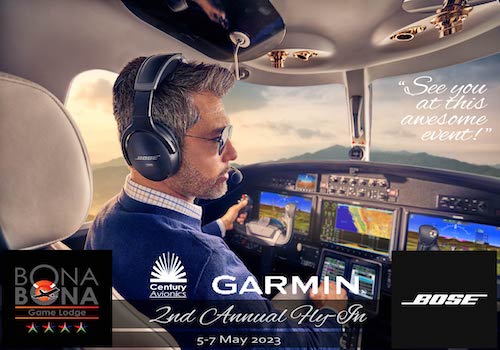 TEXTRON AVIATION SECURES ANAC CERTIFICATION FOR CESSNA SKYCOURIER, PAVING THE WAY FOR SALES IN BRAZIL. Textron Aviation today announced the Cessna SkyCourier twin utility turboprop has been awarded type certification by the National Civil Aviation Authority of Brazil (ANAC), paving the way for the aircraft to serve the dynamic and expansive Brazilian market and cater to its diverse aviation needs. 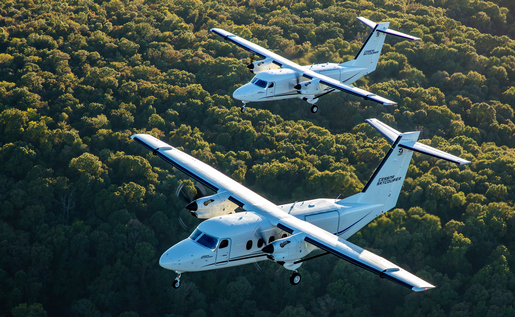 The aircraft offers an unparalleled combination of performance, capacity and capability, positioning it as a catalyst for enhanced regional connectivity, efficient cargo transportation, and reliable regional passenger operations. The SkyCourier is an ideal fit for Brazil's diverse geography, remote locations and growing demand for air transportation. The SkyCourier's adaptability allows for seamless transitions between different mission profiles, including passenger transport, cargo delivery and special mission's operations. With its short take-off and landing capability, the aircraft can operate from smaller runways, reaching remote communities and serving locations with limited infrastructure. Additionally, the recently certified gravel kit option further expands the SkyCourier's capability to operate from unimproved runways.   The 2023 EAA AirVenture fly-in enabled a broad spectrum of the aviation sector and the public to see VoltAero's Cassio 330, and to learn about the company's vision for the future of hybrid-electric aircraft. EAA AirVenture is one of the globe's largest air shows, and the event at Oshkosh's Wittman Regional Airport once again earned its title as "The World's Greatest Aviation Celebration" - with a record-breaking attendance of 677,000 people attending the week-long event that concluded on July 30. VoltAero brought its full-scale Cassio 330 mock-up to Oshkosh, which attracted a steady flow of visitors to the company's outdoor exhibit in the main display area. As part of its activity, VoltAero organized a press conference for international journalists, who were provided with an update on the Cassio aircraft family's development and certification process. 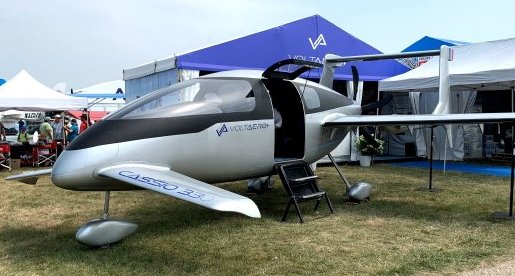 "We will fly the Cassio 330 initially in pure thermal version to validate the aircraft's aerodynamic configuration, which is 50 percent more efficient than any aircraft flying today in the same category," Botti told journalists at the press conference. "This will be followed by flight tests and certification with the Cassio 330 equipped with its electric-hybrid powertrain." The full-scale Cassio 330 mock-up on VoltAero's exhibit stand was a major attraction during the week-long EAA AirVenture fly-in. One of the VoltAero Oshkosh exhibit's highlights was the display of Kawasaki Motors, Ltd.'s four-cylinder and six-cylinder piston engines that are to operate with hydrogen - providing a look at the future of the Cassio aircraft family's powertrain. This is part of the Japanese company's roadmap as it enters the general aviation marketplace, with Kawasaki Motors serving as both an engine supplier and a strategic investor in VoltAero. For the nearer term, Kawasaki Motors' gasoline-fuelled engines will power the Cassio 330, with testbench operations already underway. "We have aviation in our DNA, because our motorcycle business started as an extension of Kawasaki's aircraft business - therefore, it was a natural move," explained Yuichiro "Jamie" Imai, Manager in the Business Planning Department of Kawasaki Motors. "Motorcycle engines need to be light and compact, while also having the right balance - as well as generating great power. As a result, there are common requirements for engine performance and sizing on a motorcycle and in general aviation airplanes." Imai added that Kawasaki's strategy is to adapt its engines for aircraft applications to operate on both hydrogen and biofuel in addition to gasoline. "A four-cylinder test engine already is operating on hydrogen, and we are very excited about the progress," he said. As a next step, Kawasaki is working on an in-line six-cylinder aviation engine with a 2.1-liter displacement, which is more than double the size of the four-cylinder engine. This larger engine currently is running in the company's research and development department, with a target of delivering sample engines by the end of next year, according to Imai. 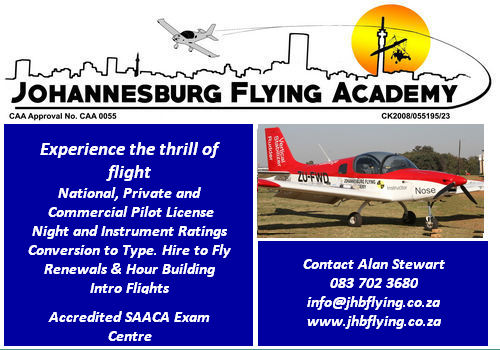  PIPER M600/SLS HALO SYSTEM WITH GARMIN AUTOLAND ACHIEVES TCCA CERTIFICATION. "The certification of HALO in Canada is an important accomplishment for M600 owners, Piper and our Canadian dealer, Aviation Unlimited," said Ron Gunnarson, Vice President of Sales, Marketing and Customer Support at Piper. "It is our mission to bring the latest and greatest technology in our aircraft to customers worldwide." 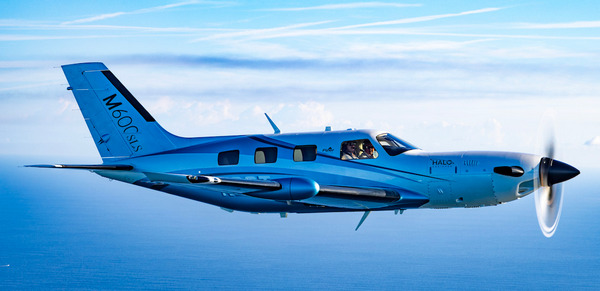 "We are thrilled to have the certification of HALO completed in Canada and to offer our customers the promised piece of mind that comes with the Garmin Autoland system," stated Solly Capua, President of Aviation Unlimited, Canada's authorized Piper Dealer. The Piper M600/SLS with the HALO Safety System is the first general aviation aircraft certified with Garmin Autoland. This revolutionary system supports digital technology that safely lands the aircraft at the nearest suitable airport in the event that the pilot is incapacitated. Additionally, the Garmin G3000 avionics suite includes Auto-throttle, Autoland, Emergency Descent Mode, Electronic Stability and Protection, Surface Watch, Safe Taxi, and Flight Stream 510, all of which are designed to enhance safe operation of the aircraft. Beyond the flight deck, the 6-seat M600/SLS is powered by a Pratt & Whitney PT6A-42A 600shp engine. The aircraft has a maximum cruise speed of 274 ktas/507 km/h, a max range of 1,658 nm / 2,748 km, and a standard useful load of 2,400 lbs. / 1,089 kg.   De Havilland Aircraft of Canada Limited (De Havilland Canada) recently announced the launch of the DHC-6 Twin Otter® Classic 300-G™ with combined purchase agreements and letters of intent totalling 45 aircraft. "For over 50 years, the DHC-6 Twin Otter has stood alone as the most reliable and versatile aircraft in its class," said Brian Chafe, CEO of De Havilland Canada. "After extensive consultation with our customers, we are poised and proud to take this iconic aircraft to new heights with the new DHC-6 Twin Otter Classic 300-G." 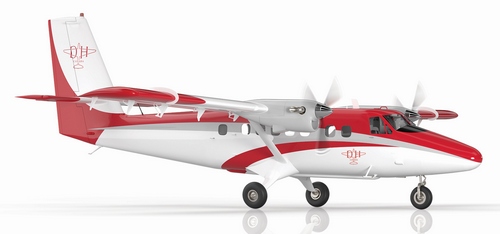 "De Havilland Canada continues to shape aviation with innovative utility aircraft, and we are proud to offer our G1000 NXi integrated flight deck with the latest version of the iconic DHC-6 Twin Otter," said Carl Wolf, Garmin Vice President of Aviation Sales and Marketing. "The G1000 NXi will bring wireless cockpit connectivity, enhanced situational awareness, visual approach capability, and our fully integrated GFC™ 700 autopilot with envelope protection to the Classic 300-G aircraft." Over the course of the Paris International Air Show, De Havilland Canada will announce Purchase Agreements with our valued Twin Otter Classic 300-G launch customers. The Classic 300-G is the fifth generation of the Twin Otter aircraft, joining the current Series 400. All DHC-6 Twin Otters carry passengers, transport VIPs, move cargo, conduct medivac operations, and perform special missions in the world's most unforgiving environments. When mounted on amphibious floats, these aircraft move seamlessly between paved surfaces and water-landing areas. As De Havilland Canada continues to grow its footprint in Canadian aerospace, the launch of the DHC-6 Twin Otter Classic 300-G will bolster the local economy by creating 80 and 91 permanent production jobs in Calgary, Alberta and Victoria, British Columbia, respectively. 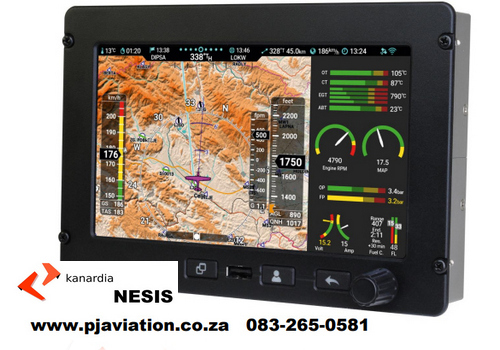  Embry-Riddle Aeronautical University has selected the Austro Engine jet-fuel piston engine-powered Diamond Aircraft DA42-VI for its fleet renewal to provide multi-engine training at its Daytona Beach, Florida campus. The contract is for 12 new DA42-VI aircraft, to be delivered in 2024. "We are excited to extend our long-term use of Diamond DA42 Aircraft," said Dr. Ken Byrnes, Embry-Riddle's assistant dean and Flight chair of Aeronautical Science. "Diamond's commitment to the safety, quality and technological advancement of their aircraft align perfectly with our core values." 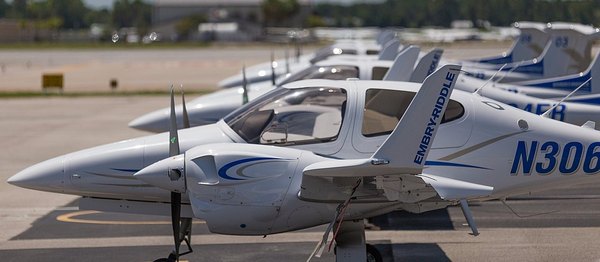 The 4-seat DA42-VI is the newest version of Diamond's technology leading light piston twin-engine aircraft. It's the first certified general aviation piston aircraft to combine modern technology airframe, avionics, and power plants. With its unique combination of performance and utility, the jet fuel powered DA42-VI is designed to make transitioning from single to twin engine much easier. The aircraft generates fuel savings of up to 50% compared to conventional AVGAS powered twins, and its panoramic canopy provides excellent visibility during all flight manoeuvres.   ZeroAvia today announced that it has signed an agreement to provide its ZA600 hydrogen-electric engines to new operator Surcar Airlines as it looks to bring green flights to the Canary Islands. Surcar plans to use Twin Otter seaplanes retrofit with the ZA600 powertrain on sightseeing tours. The newly launched airline is backed by investors including the Danish carrier Nordic Seaplanes. Surcar Airlines is committed to spearheading the electrification of aviation to enable zero-emission flights in the Canary Islands. By pioneering captivating, green sightseeing flights, the company aims to inspire and drive other operators towards adopting sustainable practices, accelerating the transition to a cleaner future for the entire industry. 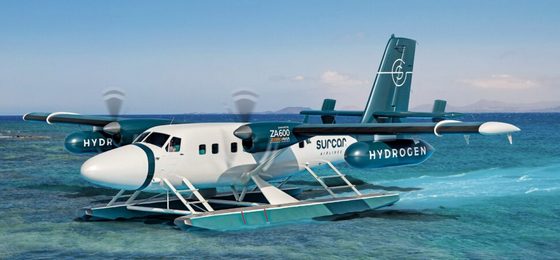 ZeroAvia is on track for certification over the next two to three years of the ZA600, 600kW engine for 9-19 seat aircraft over the next two to three years and has a Memorandum of Understanding with De Havilland of Canada, type certificate holder of the Twin Otter. The European Union is targeting 55 percent reduction in greenhouse gas emissions by 2030, and Spain's National Energy and Climate Plan aims to achieve an entirely carbon-neutral transport system by 2050. Such policy action is echoed in consumer attitudes. According to a survey conducted by the European Investment Bank, three-quarters of Europeans plan to fly less frequently in the future for environmental reasons. Delivering clean flight is a strategic imperative for the aviation industry.    USA, Ritchfield, UT: A Piper PA-28-180 Cherokee C sustained substantial damage in a forced landing on the eastbound lane of Interstate 70, near mile marker 22, in Ritchfield, Utah. The pilot and passenger were not injured. It appears that the airplane ran out of fuel. Brazil, 80 km from Brasília, Formosa, GO: A Brazilian Navy Eurocopter (Helibras) UH-15 Cougar Mk2+ (Eurocopter EC 725BR-B), operated by 2nd Squadron of General Employment Helicopters, crashed during a fast rope exercise carried out 80 km from Brasília, in the region of Formosa, Goiás. Two deaths are confirmed and nine of the other 12 persons were injured and taken to hospital. USA, Rigby Airport, Rigby: An experimental Team Z-Max, amateur built by Ronald B. Reynolds, experienced a loss of engine power and a subsequent impact with airport terrain during the attempted return to the departure runway at Rigby Airport (U56), Rigby, Idaho. The sole pilot sustained serious injuries and the aircraft was destroyed. According to witnesses, shortly after taking off, the airplane experienced engine sputtering, and the pilot attempted to make a landing. The pilot tipped the wing hitting the runway during the landing and crashed. Mexico, near Tapachula, Chiapas: A light plane crash landed near Tapachula, Chiapas and caught fire. A large number of drugs were confiscated by Mexican law enforcement officers. The airplane had illegally entered Mexican airspace. USA, near Thomaston, GA: A Cessna P210N Pressurized Centurion an (O&N Rolls-Royce "Silver Eagle "Conversion), was destroyed when it was involved in an accident near Thomaston, Georgia. The sole pilot onboard was fatally injured. ADS-B data shows that at 10:04:22 LT, the aircraft entered a rapid descending right spiral from 12000 feet. The last ADS-B return was recorded at 14:05:03 LT, with a recorded average decent rate of -28608 fpm. USA, Belleville, MI: A Mikoyan-Gurevich MiG-23UB Flogger C jet was destroyed when it crashed near an apartment complex during an airshow near Willow Run Airport (YIP/KYIP), Ypsilanti, Michigan. The two occupants ejected at low altitude and one of them landed in the lake. They survived with minor injuries. Not confirmed: A probable engine failure was the cause of the accident. Flames were seen coming out of the engine just before ejection (possible bird strike). USA, San Diego International Airport, CA: A Cessna 560XL Citation XLS+ (N564HV) corporate jet and Southwest Airlines flight WN2493, a Boeing 737-700 (N7734H), were involved in a runway incursion incident at San Diego. Preliminary information suggests that WN2493 was cleared to line up on runway 27 by San Diego Tower: "Southwest 24-93 Olympic Tower, traffic on five mile final and two five zero at one one, runway 27 line up and wait." Two minutes later, with WN2493 still on the runway, N564HV radioed the Tower controller, asking if they were still cleared to land. The controller then issued instructions to N564HV to go around. The Citation executed a go around, overflying the Boeing 737 by about 100 feet. WN2493 subsequently departed normally and the Citation landed 14 minutes later.    8 AUGUST 1982 First flight of the Cessna 208 Caravan  The strutted, high wing 208 typically seats nine passengers in its unpressurized cabin, is powered by a single Pratt & Whitney Canada PT6A tractor turboprop and has a fixed tricycle landing gear, floats, or skis. By 2022, 3,000 had been delivered and 24 million flight hours have been logged. Caravans have been used for flight training, commuter airlines, VIP transport, air cargo, and humanitarian missions.  Globe Swift - A Pocket Rocket  Google Banner Ad Google Banner Ad |
                      |
 |
 |

Copyright © Pilot's Post PTY Ltd
The information, views and opinions by the authors contributing to Pilot's Post are not necessarily those of the editor or other writers at Pilot's Post.